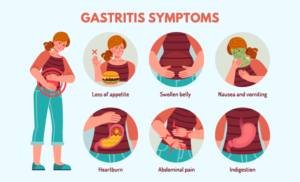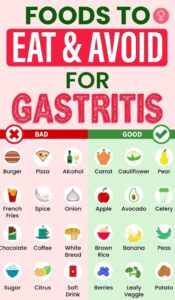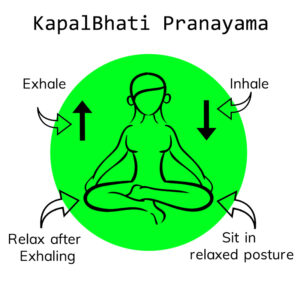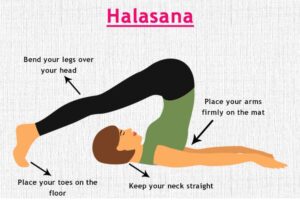Hello Bloggers, Welcome to all of you in Lifelong Health. In this article, we provide Best Home Remedies For Gastric and Bloating Issues. Nowadays, people live in a fast-paced world where foods high in trans fats, sugars, and oil are frequently consumed, which almost always causes upset stomachs. In addition to adults, children, teens, and the elderly can also suffer from digestive disorders and other illnesses affecting the gastrointestinal system.
One such frequent worry is stomach issues, which can be very embarrassing, particularly if the sufferer has an unpleasant after-meal stench. An adult typically passes gas 13–21 times per day. An essential component of digestion is gas. Everyone has gas, but different people are more troubled by it than others. Excessive gas can occasionally become painful or uncomfortable. A stabbing pain in the chest or abdomen may be the result of trapped gas. When the pain is severe enough, you might think you have a gallbladder attack, appendicitis, or a heart attack and head to the emergency room.
Gas production and passage are normal aspects of digestion. If a gas bubble becomes lodged inside you, however, you want to get rid of the pain as soon as possible. In addition, it’s a good idea to identify the source of your pain if you have additional symptoms.
However, you can improve digestion and relieve gas by making small dietary adjustments. Apart from products available without a prescription, everyday kitchen items can also function as gas relievers.
Several factors can lead to gastric problems; the following are some common ones: For Gastric and Bloating Issues
1. Dietary Habits: Eating foods that are spicy, fatty, or acidic, as well as consuming large amounts of caffeine, alcohol, or carbonated drinks, can irritate the lining of the stomach, resulting in gastric problems. Maintaining a healthy body weight requires limiting daily calorie and carbohydrate intake, but this restriction only applies to the digestible carbohydrates, such as sugars and starches; fibers, or indigestible carbohydrates, need to be consumed in significant quantities. Lack of soluble and insoluble dietary fiber in regular meals makes it harder for the body to flush out solid wastes via the bladder and bowel, which inevitably leads to stomach problems.
The roughage found in green leafy vegetables such as spinach, kale, and whole-grain cereals like oats and barley is essential for facilitating bowel and bladder movements, which in turn ensures that waste products from food, harmful toxins, urine, and stool are eliminated without obstruction.
2. Infection with Helicobacter pylori (H. pylori): This bacterium can infect the lining of the stomach and cause inflammation, which can result in gastritis or ulcers.
3. Stress: Busy daily schedules can lead to elevated levels of stress, tension, and anxiety. They can even precipitate mental health conditions like anxiety and depression. This not only impairs cognitive function, memory, focus, and productivity, but it also hinders gastrointestinal processes. The amount of nutrients that are absorbed by the stomach tissues from meals is decreased, more gas is produced internally, and the intestinal walls are weakened, which compromises the barrier that prevents harmful bacteria from foods from invading the other body organs.
4. Medication: Some drugs, like aspirin or ibuprofen, which are nonsteroidal anti-inflammatory drugs (NSAIDs), can irritate the stomach lining and result in ulcers or gastritis.
5.Smoking: Smoking can erode the stomach’s protective lining and raise the production of stomach acid.
6. Gastroesophageal reflux disease (GERD): Heartburn and indigestion are among the symptoms of chronic acid reflux caused by a weaker lower esophageal sphincter.
7.Medical Conditions: Disorders such as inflammatory bowel disease (IBD), gastritis, peptic ulcers, gastroparesis (delayed stomach emptying), and gastritis can aggravate stomach problems.
8. Food Intolerances: Food allergies or intolerances to specific foods can cause symptoms related to the stomach.
9. Obesity: Carrying too much weight can put strain on the abdomen, causing discomfort in the stomach and acid reflux.
10. Pregnancy: Changes in hormones can impact digestion and cause stomach problems like heartburn.
Gastric and Bloating Issues Symptoms:
A number of symptoms that point to digestive distress can be indicative of a gastric problem. Bloating, which is characterized by an abdomen that feels full or constricted and is frequently accompanied by visible swelling, is one of the common symptoms. Upper abdominal discomfort or pain, occasionally coupled with a burning feeling or nausea, is the classic sign of indigestion or dyspepsia. Heartburn is another common symptom of acid reflux, which is a burning sensation in the chest.
Gastritis sufferers may also experience regurgitation, which is the rising of stomach contents into the throat, resulting in an aftertaste or a feeling that food is coming back. Lower Body Gas, cramping, or a post-meal feeling of being weighed down can also be signs of stomach issues.
A decreased appetite or unexplained weight loss may be experienced by some, while others may notice changes in bowel habits, such as constipation or diarrhea. These kinds of persistent symptoms should be the reason to see a doctor for an accurate diagnosis and suitable treatment of any stomach problems. Maintaining digestive wellness and general health can be facilitated by being aware of and taking action against these symptoms.
Foods And Natural Treatments For Gastric and Bloating Issues:
1. Peppermint Oil Supplements: To treat conditions like bloating, constipation, and trapped gas, some people take peppermint oil capsules. Further research is required, but some research (Trusted Source) indicates that it might be helpful. Select enteric-coated capsules at all times. Heartburn may result from uncoated capsules dissolving in the digestive system too quickly.
People taking iron supplements should avoid taking these capsules with peppermint because peppermint inhibits the absorption of iron. Those who have anemia might not be a good fit for them.
2. Ginger: Ginger relieves gas and bloating by slowing down the fermentation process in the stomach.
You can take supplements containing ginger or drink ginger tea. Ginger is most effectively consumed through food. Try eating pickled ginger slices or incorporating it into savory dishes.
3. Fennel Seeds: Fennel seeds have a reputation for naturally reducing intestinal gas. One teaspoon is considered to be a safe amount. Check to see if chewing some seeds helps.
4. Use activated charcoal: Gas can be treated or prevented by taking activated charcoal pellets orally. When the gas exits the body through the stool, the charcoal absorbs and eliminates it.
5. Herbal Tea: Teas infused with spearmint, ginger, and anise are well known for their ability to naturally relieve gas. However, because anise may have a slight laxative effect, avoid using it if you frequently have diarrhea. Nonetheless, if you believe that constipation is aggravating your gas pains, this may be useful.
6. Apple Cider Vinegar: A traditional remedy for gas release is to dissolve one tablespoon of apple cider vinegar in a glass of water and drink it.
Anecdotal evidence implies that this might work, but there isn’t any scientific proof to back up this assertion. Nevertheless, this approach has no unfavorable side effects.
7. Give baking soda: Mix 1/2 teaspoon of baking soda (a trusted source) with a glass of water, then sip. Take care not to use more baking soda than 1/2 teaspoon. A stomach rupture could result from consuming too much baking soda when your stomach is fullTrusted Source
8. Cloves: Traditionally, digestive issues like indigestion, gas, and bloating have been treated with clove oil. While there isn’t enough data to prove it’s safe or effective for flatulence, some research indicates it might be able to prevent ulcers.
Clove oil consumption after meals can lower intestinal gas production and boost digestive enzymes.
9.Hot Pad: Applying a heating pad or hot water bottle to the abdomen can help reduce discomfort and pain associated with gas. Gas passes more easily through the intestines because the heat relaxes the muscles in the gut. Additionally, heat can lessen pain perception.
10.Probiotic : supplements serve to replenish the gut with advantageous bacteria. Several digestive issues, including infectious diarrhea, are treated with them.
Certain probiotic strains may be able to reduce bloating, intestinal gas, abdominal pain, and other symptoms associated with IBS, according to some researchTrusted Source.
To determine which probiotics are most beneficial, more research is necessary.
Items To Steer Clear Of If You Have Gastric and Bloating Issues:
Some food groups, while providing important nutrients like vitamins, minerals, and antioxidants, can exacerbate bloating and exacerbate the symptoms of gastric problems. Therefore, it’s advisable to limit your intake of these foods until all flatulence, constipation, and pain associated with a gassy gut disappear and your digestion returns to normal.
- Difficult Sugars
- The fructose
- The lactose
- Insoluble Tissues
- Starch
Simple And Effective Methods To Manage Gastric and Bloating Issues:
Constipation, flatulence, and other stomach problems can be prevented by intentionally adopting certain eating habits in addition to eating a healthy, balanced diet high in carminative foods, or foods that help the body release trapped gas, and avoiding the aforementioned food groups.
- Let it out/ Move around
- Get a massage
- Deep breathing
- Eat slowly and chew your food well.
- Stop Talking while eating
- Eat smaller meals, more frequently.
- Sit up straight after a meal.
- Walk after a meal.
- Eliminate trigger foods
- Pass stool
- Avoid foods known to cause excess gas.
- Avoid Chewing Gum
- Say no to straws
- Watch Out For Food Allergies
- Choose non-carbonated drinks
- Wear Comfortable Clothing
- Don’t smoke or chew tobacco.
- Drink liquids at room temperature, not too hot or too cold.
- Increase your physical activity.
Nutrition :
Additionally, making dietary changes can help avoid gas issues. You might feel pressured to eliminate foods high in fiber from your diet because they can cause gas. But fiber is necessary for a healthy gut, and foods high in fiber also contain important vitamins and minerals. Hence, your best option is moderation.
Among the foods high in fiber are:
- Vegetables (especially asparagus, artichokes, beets, broccoli, Brussels sprouts, cabbage, carrots, corn, and potatoes)
- Lentils
- Kidneys beans
- Peas
- Certain fruits (for example, apples, peaches, pears, bananas, raspberries, and strawberries)
- Whole grains
- Dairy products such as milk, cheese, ice cream, and yogurt may also contribute to extra gas for some people. So can fruit juices and sugar-free candies that contain sorbitol, mannitol, or xylitol.
Yoga for Gastric and Bloating Issues:
Yoga is a fantastic addition to a balanced diet and mindful eating practices for treating common abdominal health issues such as gastric problems, indigestion, bloating, flatulence, and irritable bowel syndrome (IBS). To manage stomach issues, even medical professionals such as doctors now advise doing yoga poses on a daily basis.
Yoga has amazing effects on gut health, such as improving blood flow to the stomach and intestines, which aids in digestion, and controlling bowel movements, which reduces gas buildup in the stomach.
These yoga poses offer excellent wellness benefits for enhanced gut health and better digestive processes.
Kapalabhati Pranayama:
The words “skull” and “bhati” denote the two elements. This yoga breathing technique, which literally means “breath of cleansed, illuminating mind,” is a perfect cure for obesity and a host of stomach issues.
Steps:
- Fold your legs while sitting on the floor.
- Keep your back straight and close your eyes.
- Maintain your right palm on the right knee and your left palm on the left knee.
- Draw in a full breath.
- Breathe out hard so that your stomach goes all the way inside.
- Breathe out loud and concentrate on overcoming any digestive disorders.
- Don’t work too quickly on this. The appropriate speed is medium.
Benefits:
This yoga exercise improves respiratory functions, lung
health, mends erectile dysfunction and promotes reproductive wellness. It also
ensures normal insulin production by the pancreas, as well as cleanses the
internal organs such as stomach, intestines, liver and kidneys of toxins.
Moreover, it stabilizes the mind, relieving stress, in addition to accelerating
weight loss.
Halasana
Since the Sanskrit words “Hala” and “asana” signify “plough” and “pose,” respectively, Halasana is referred to as the plough pose.
Procedure:
- On your back, lie down.
- Maintain the unity of your legs and let your body sink in. It’s known as Shavasana pose.
- While breathing normally, place your palm flat on the ground.
- Push the palm down and lift both legs as you release the breath.
- Try to stow them behind your head next. After a few minutes, maintain the pose while taking slow, deep breaths.
- Take a moment to pose yourself in Shavasana. Continue doing this three to five times.
Benefits:
Practicing the yoga pose halasana can improve digestion, help with weight loss, and strengthen the muscles in the abdomen and spine. These are just a few of the many health benefits of this posture. Those with type 2 diabetes can also benefit greatly from it since it regulates insulin secretion, which helps to avoid sharp increases in blood sugar. In addition, it reduces mental stress and eases the pain and mood swings associated with menopause.
Ushtrasana
Since the word “ushtra” means “camel,” this pose is also referred to as the “camel pose.” This is excellent for maintaining nervous system activity, blood circulation, and back issues.
Stages:
- Bend backward while seated on your knees.
- Using your right hand, hold your right heel or ankle, and your left hand, your left heel or ankle.
- Lean your head and neck back while slightly bringing your waist forward. You will return to normal breathing after 6–10 seconds in this posture.
- Return to the starting position after a short while. Remove your hands from the heels. Five more times, repeat the same procedure.
Benefits:
Increasing lung capacity and chest size significantly, Ushtrasana helps to relieve chronic respiratory conditions like bronchitis, COPD, and asthma. It also encourages deep breathing. In addition to promoting stomach digestion, it flexes the muscles in the neck, shoulders, and abdomen. It acts as a positive regulator of hormone imbalances by stimulating the thyroid gland. Additionally, it increases blood flow to the brain, which enhances memory and focus and gets rid of bad feelings and thoughts.
You May Also Read : The Top Life Stressors And How to Handle Them
Frequently asked questions:
What should I consume to get rid of stomach gas?
Thirty minutes before breakfast, drinking a cup of hot water is a traditional Iranian remedy for gas prevention. There is insufficient data to support the earlier researchTrusted Source that suggests chamomile or ginger tea may be beneficial.
Plus, it might be a smart idea.Reliable Source for:
- Avoid drinking anything for at least an hour after eating.
- Reduce or stay away from carbonated drinks
- Steer clear of Trusted Source beverages that contain artificial sweeteners such as high fructose corn syrup.
- Steer clear of drinking via a straw.
Which pressure points can be used to release gas?
Acupressure is sometimes used to treat bloating. Focusing on point ST25Trusted Source in Tian Shu acupuncture may help treat the symptoms of irritable bowel syndrome, including flatulence. Located on the upper abdomen, ST25 is situated two thumb widths away from the navel.
Why does my bloating make me appear pregnant?
An enlarged abdomen that resembles a pregnancy could be the result of ascites or IBS. It is best to speak with a physician as this condition may be connected to liver issues.
For what duration can gas be trapped?
Pain can result from trapped gas for a few hours. If, after all that time, you still don’t feel better, you might want to visit your doctor to rule out a more serious condition like appendicitis.
Does consuming hot water make gas go away?
No matter the temperature, drinking more water can help release trapped gas.
In summary
A gastric problem is an abnormality of the digestive system that frequently affects many individuals of all ages. To rule out the possibility of any serious underlying conditions, such as diabetes or heart disease, it is always recommended to consult a doctor who can examine the symptoms and provide an accurate diagnosis. In mild cases, stomach discomfort can be controlled with a nutrient-dense, well-balanced diet, avoiding fatty junk food and other food groups that may make the condition worse. In addition to improving general wellbeing, an active lifestyle that includes regular exercise and yoga poses also quickly relieves stomach aches, bloating, and gas. I hope this can help you to get for Gastric and Bloating Issues.







1 thought on “Causes, Symptoms, Foods to Eat and Foods to Avoid, Home Remedies, and Yoga Exercises : For Gastric and Bloating Issues”